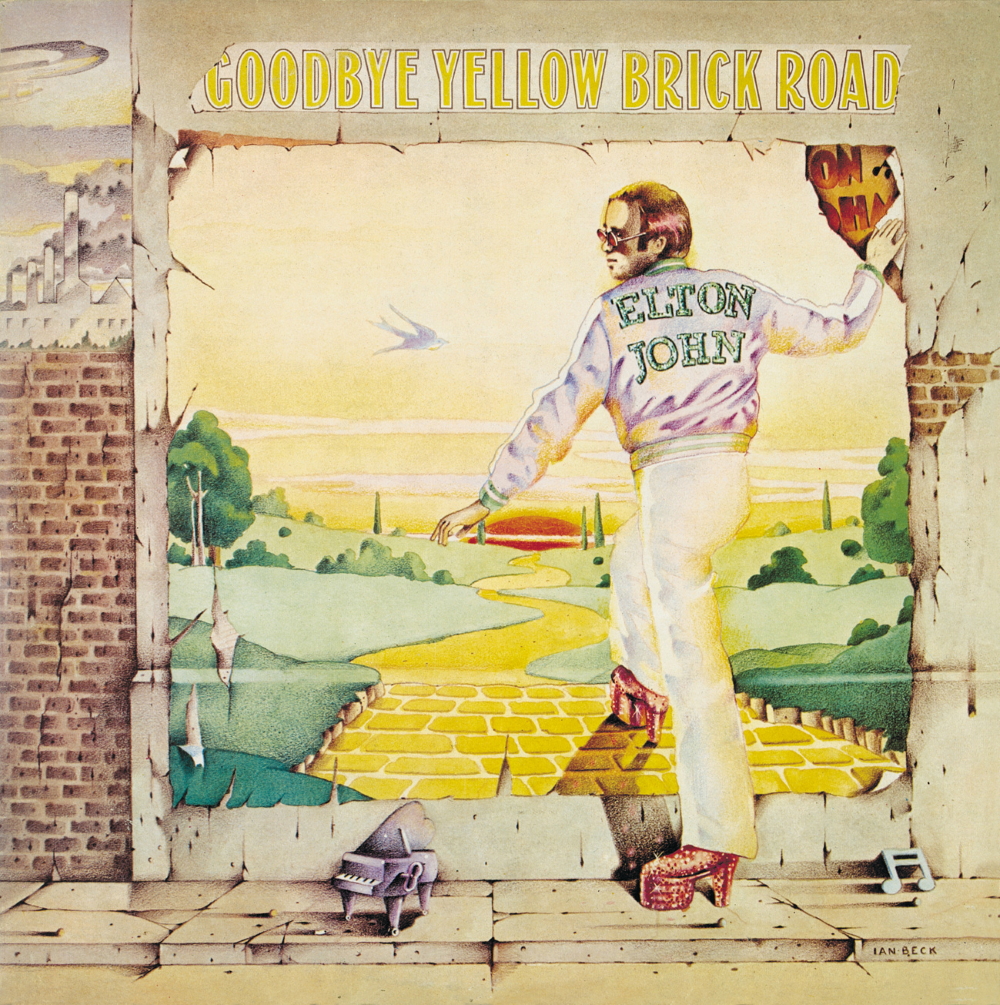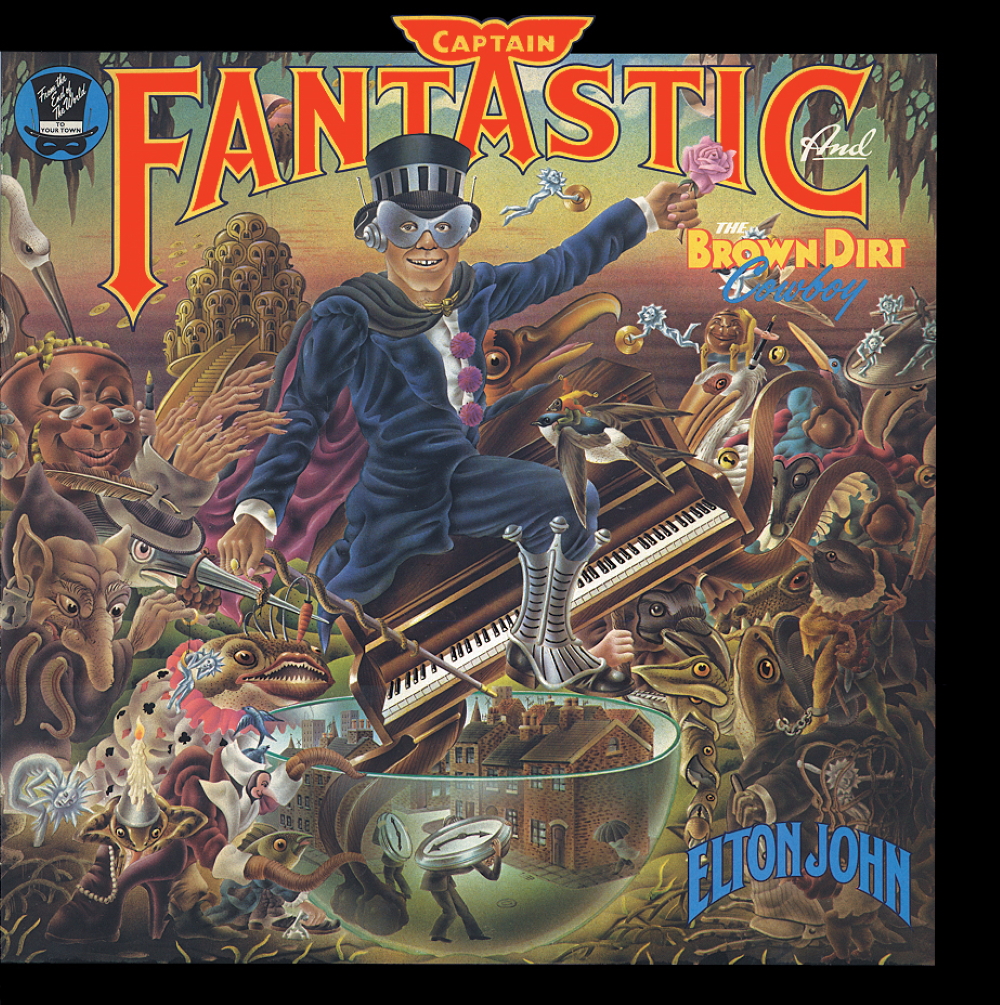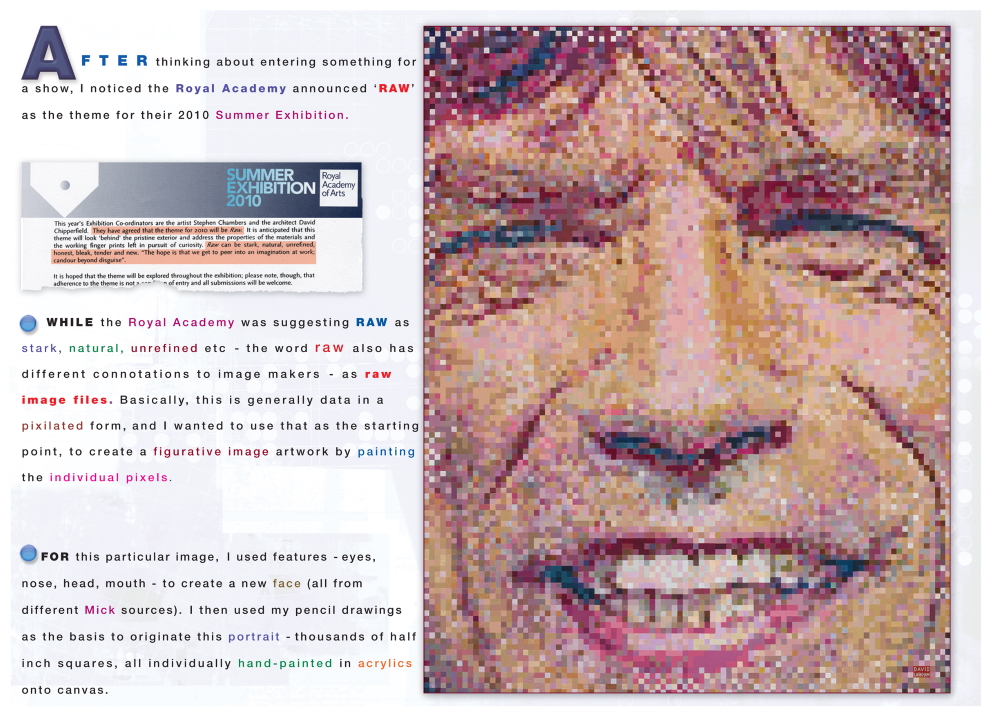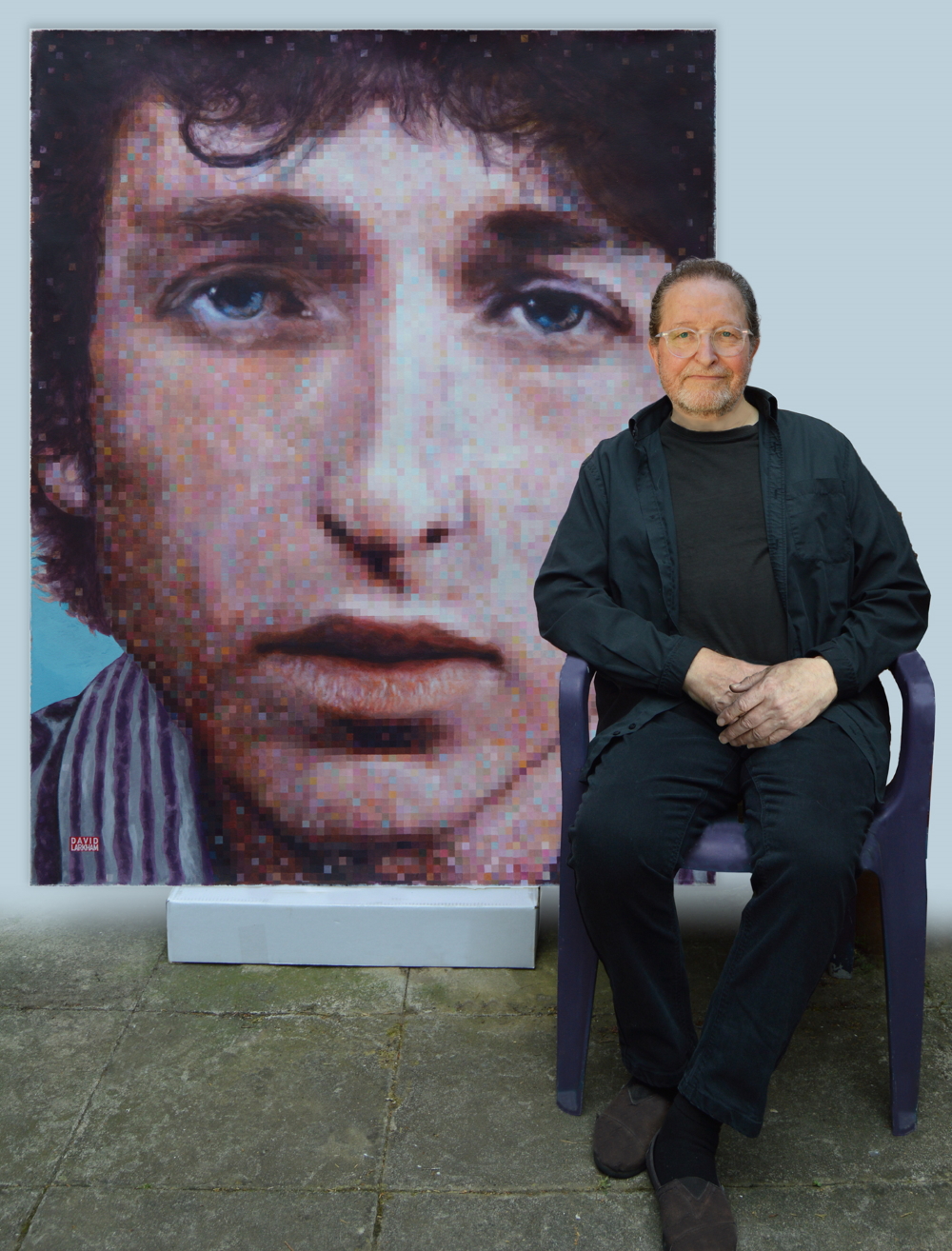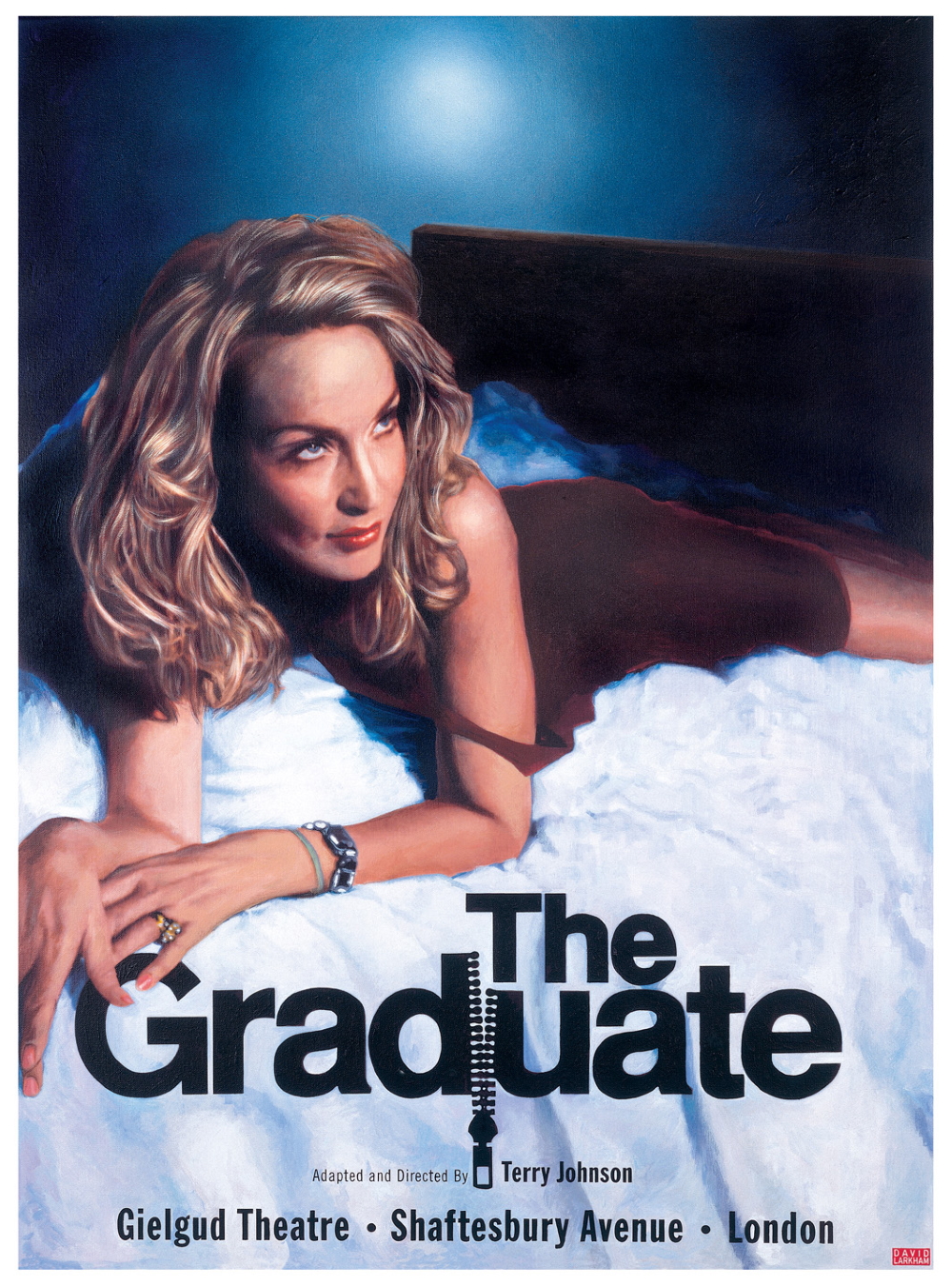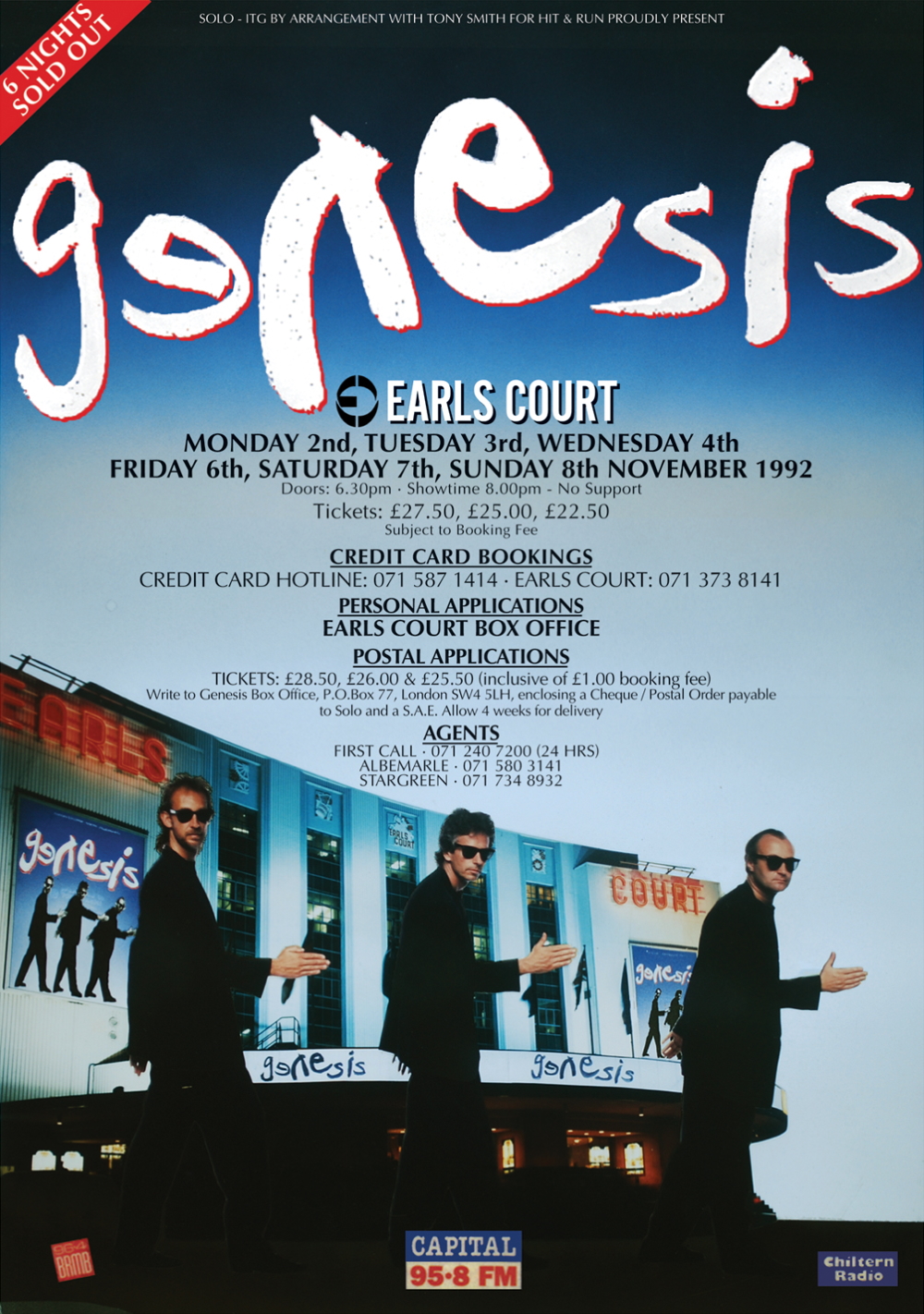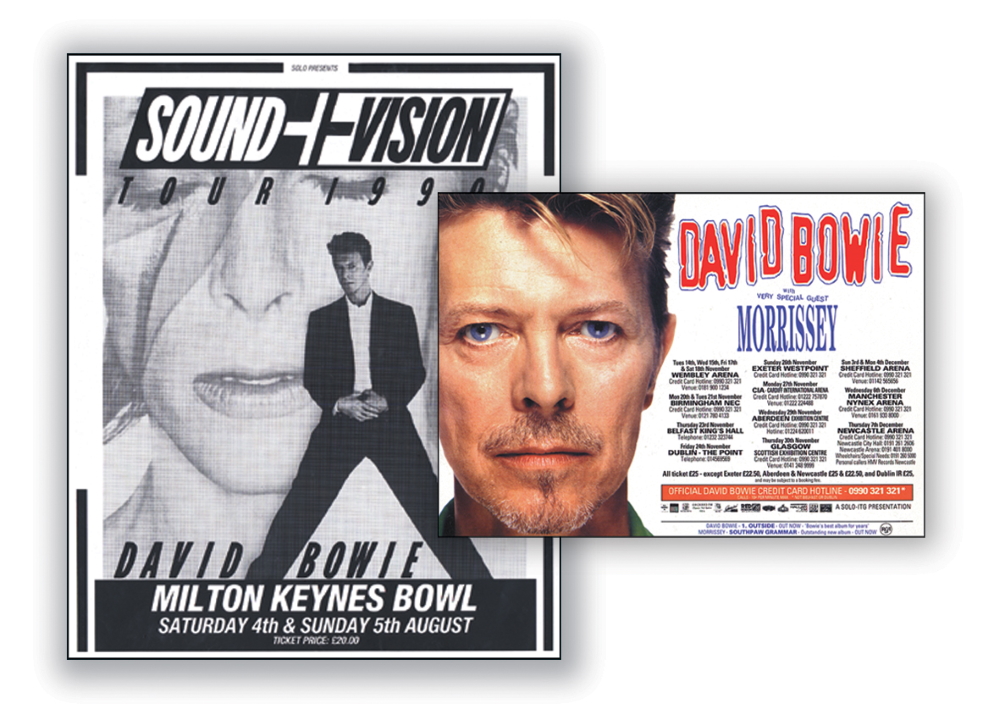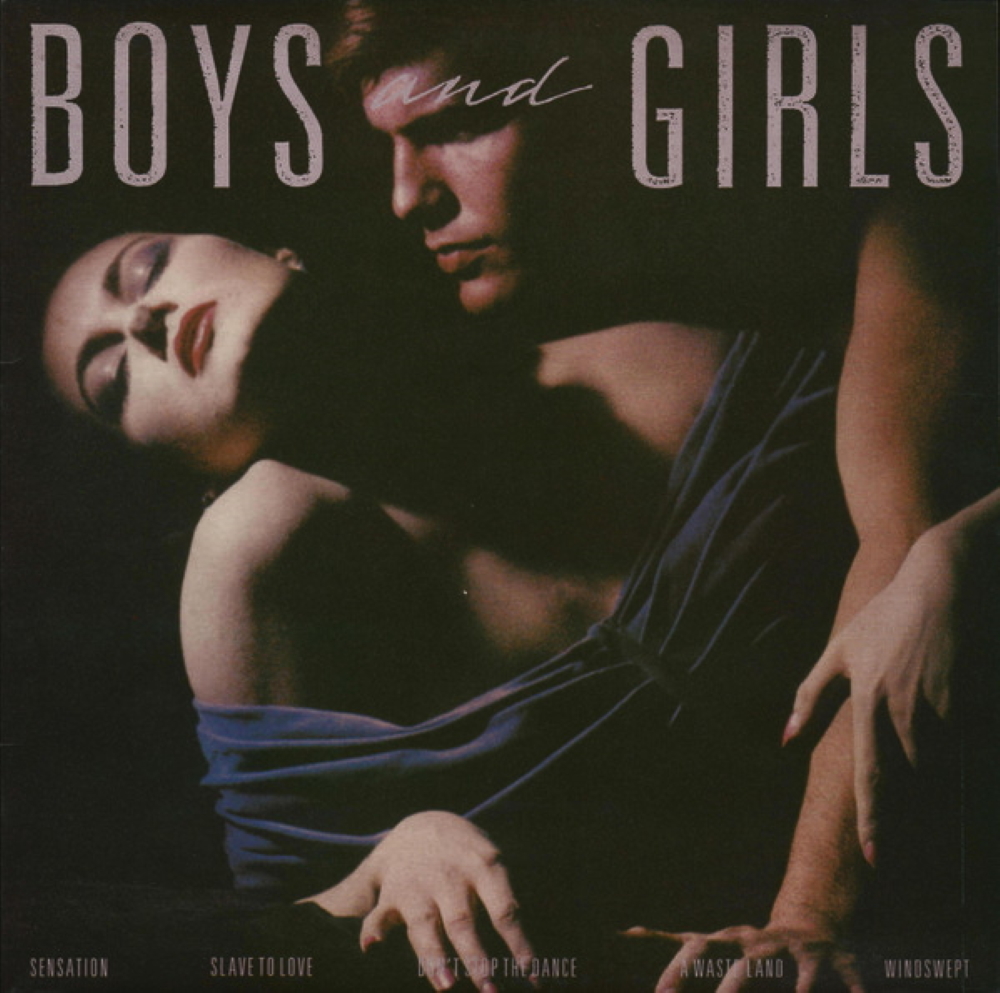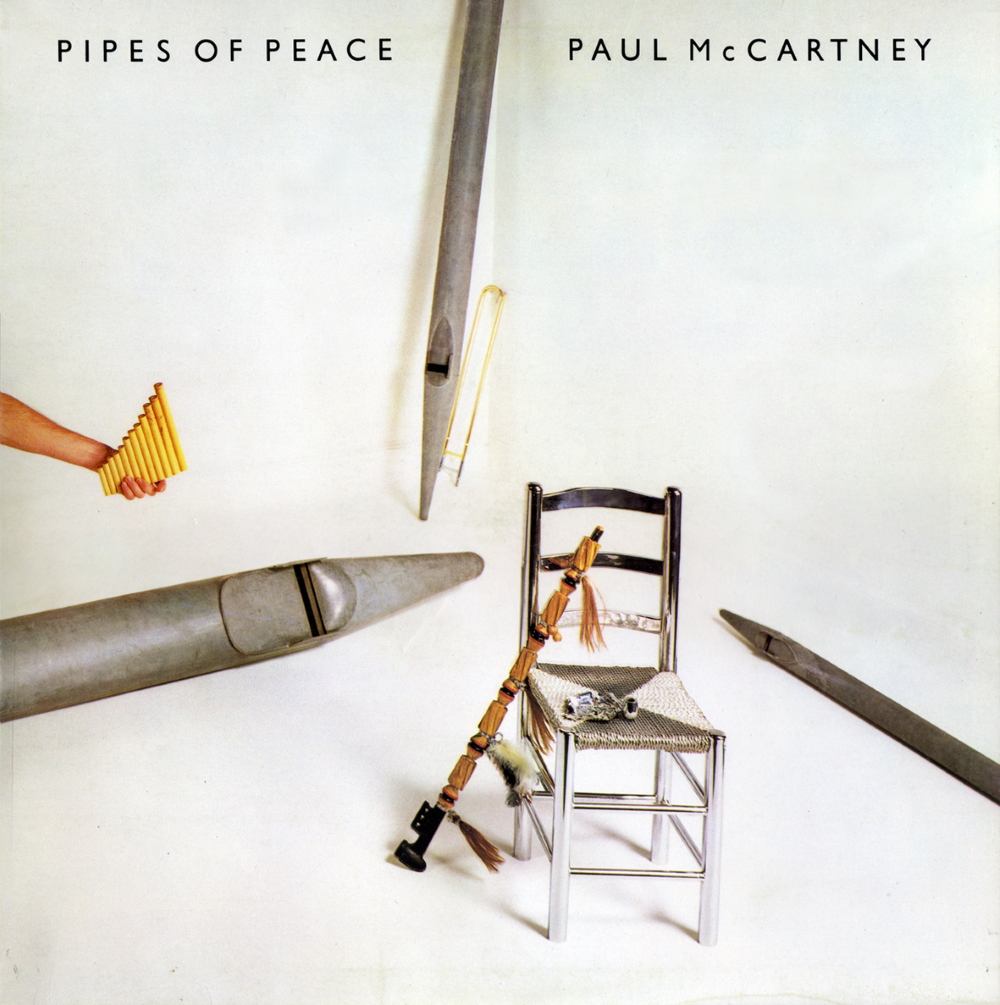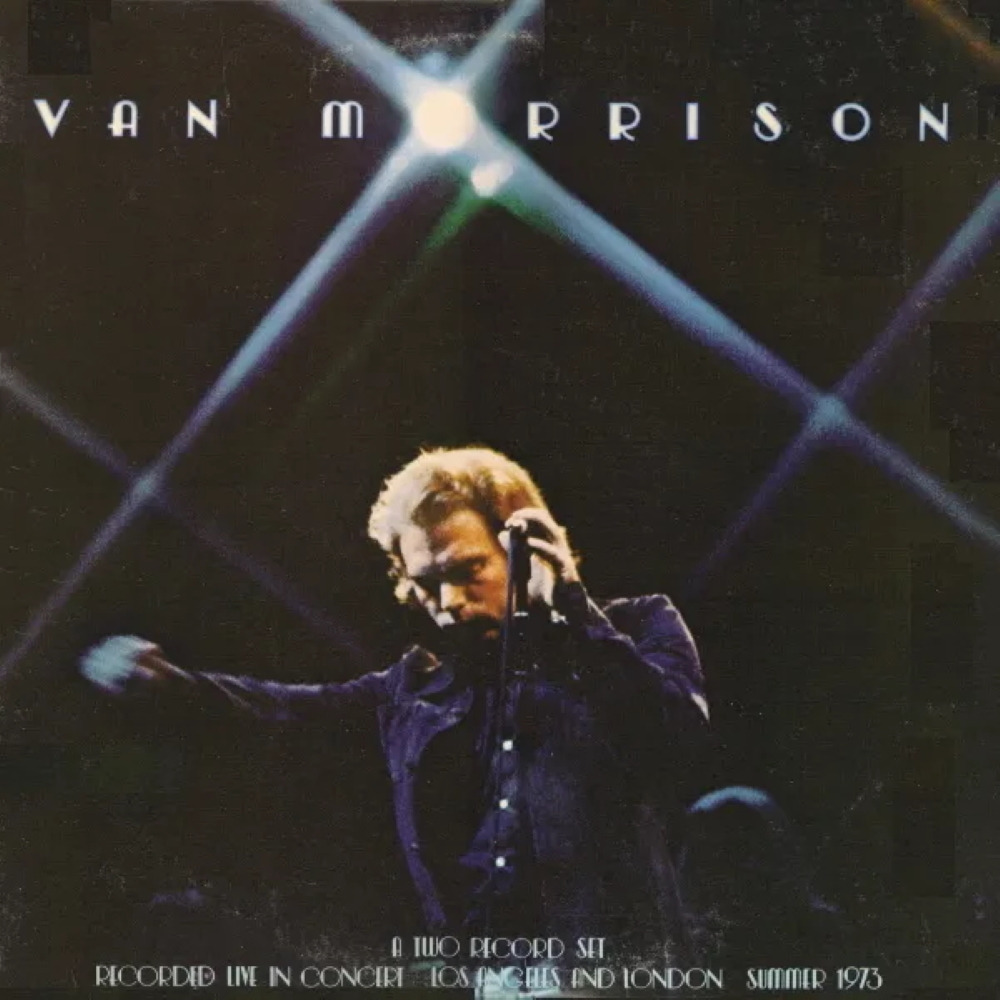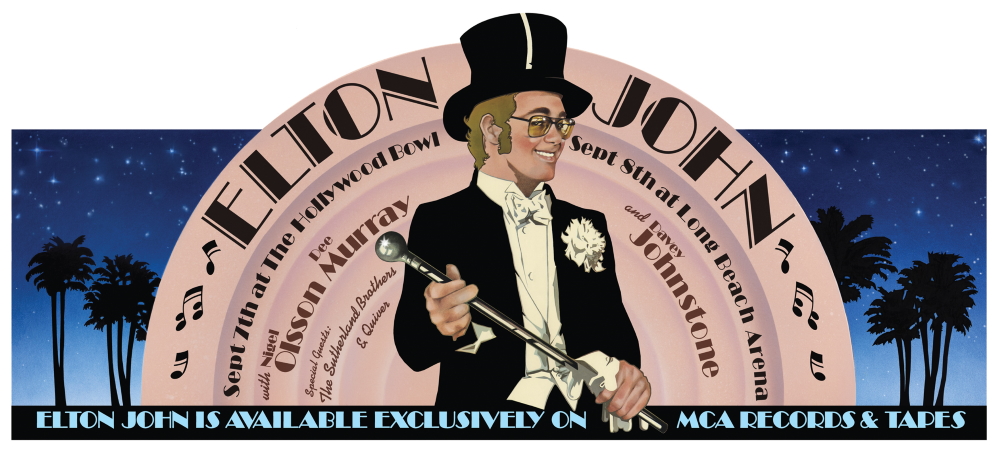David Larkham
Elton John's art director / designer / painter
GB
Elton John. Paul McCartney. Steely Dan. Van Morrison. Bryan Ferry. These legends are well-known to countless people and their music is very probably part of the individual record- or at least streaming sound collection. But who was responsible for the artwork of the popular millionsellers? This is only revealed by a closer look at the cover – the liner notes or the hidden credits‘ list in small lettering. Even worse, concert posters. The Rolling Stones, Bob Dylan, David Bowie, Fleetwood Mac, Genesis & Co. are household names. The person who has designed the large prints that are published nationwide in high numbers and can’t be overseen isn’t even mentioned. But all of such biggies whose artistic output differs from one to the other are linked by one single Englishman.
David Larkham
Elton John's art director / designer / painter
GB

Working as Elton Johns album designer/art director starting in 1969 is what David Larkham is most famous for. The decades of their cooperation include a string of worldwide bestsellers with chartbreakers and radio classics: „Elton John“ (incl. „Your Song“), „Madman Across The Water“ (incl. „Tiny Dancer“), „Don’t Shoot Me I’m Only The Piano Player“ (incl. „Daniel“, „Crocodile Rock“), „Goodbye Yellow Brick Road“ (incl. „Candle in the Wind“, „Bennie & The Yets“, „Saturday Night’s Alright For Fighting“), „Caribou“ (incl. „The Bitch Is Back“, „Don’t Let The Sun Go Down On Me“), „Captain Fantastic & The Brown Dirt Cowboy“ (incl. „Someone Saved My Life Tonight“), „Rock Of The Westies“ (incl. „Island Girl“) and „Ice on Fire“ (incl. „Nikita“). Aside from these David Larkham controlled the visual element of the classic albums by Van Morrison „It’s To Late To Stop Now“, Steely Dan („Pretzel Logic“ incl. „Rikki Don’t Lose That Number“), Paul McCartney („Pipes Of Peace“ incl. „Say Say Say“), Bryan Ferry („Boys and Girls“ incl. „Slave To Love“, „Don’t Stop The Dance“) and numerous others.
David Larkham (* 11 January 1947) attended Kingston College of Art (London) and earned a Bachelor of Arts in Graphic Design. His professional career started as graphic designer for London’s newspaper ‚The Evening Standard`. Then he worked as a freelance designer for clients such as ‚The Observer‘ (British Sunday newspaper) and “Mirrorscope” magazine of national daily tabloid ‚The Daily Mirror' and DJM Records. In the early 1970’s David moved to The United States – more precisely Los Angeles. There the creative launched ‚David Larkham & Friends studio‘, working closely with Ed Caraeff. This American photographer and art director became famous for an iconic shot of Jimi Hendrix burning his guitar at ‚The Monterey Pop Festival‘ in 1967. David’s company got high profile jobs from the big record labels and film studios. In the 1980s David Larkham was back in London and became co-proprietor of ‚The Complete Works‘. This advertising agency specialized in music and entertainment. On the one hand they created artwork for album packaging, on the other booking agents and concert promoters were on their client list too. So they handled everything from advertisements (in print, radio, tv) or the design of posters and merchandise to the entire promotion (in Europe and/or worldwide) for top acts like David Bowie, Phil Collins, Celine Dion, Bob Dylan, Fleetwood Mac, Genesis, The Rolling Stones and many more.
After a number of decades in the turbulent music-biz and having won various awards it was time to deservedly take a more relaxed approach. Art director and design jobs are still accepted, but David’s main focus has shifted from 2010 onwards. Being artistically active now means primarily for private pleasure such as doing paintings (size: 120 cm x 150 cm) „of all the current and former Stones as well as The Beatles, Dylan, Diana Ross and more.“ These fit well into his (planned) exhibition „Sixties Icons and Idols“ – the latest step in a visual arts‘ career that continues to evolve.
David Larkham lives near Epsom, a town just south of London.
Interview May 2022
(Under)cover agent: visuals for VIPs by an „invisible“
INTUITION/IMAGINATION
“Intuition is the key to everything“, said internationally acclaimed filmmaker David Lynch („Twin Peaks“). „I think you could have an intellectual ability, but if you can sharpen your intuition, which they say is emotion and intellect joining together, then a knowingness occurs.“ What sparks intuition for you, is it temporary or can it be engaged anytime?
I don’t know how it is for some others, but for me – it’s there all the time.
How does intuition present itself – being a gut feeling or a suspicious impression?
For me, it’s always a gut feeling.
Do you visualise something spontaneously in your mind’s eye - maybe in dreams?
Spontaneous suggests a fairly quick sudden impulse, probably without premeditation. But, though some ideas come quickly, design solutions are often the result of a lot of thought spread over several hours or days. Personally, it’s not ever been something I dreamt.
Will any ideas be written down immediately and archived?
I write or scribble down ideas immediately – otherwise they sometimes disappear. And each job on my computer has a file – ideas are entered there as soon as possible. Then they’re not forgotten.
What if there is a deadline, but no intuition? Does the first fuel the latter maybe?
I personally have never missed a deadline, so I guess that the deadline provides the impetus for the gut feeling solution.
Are great ideas based on intuition or by almost endless trials and errors that result in constant developments up until the final result?
Sometimes intuition, sometimes trial and error, and sometimes a combination of the two approaches.
World-famous guitarist Carlos Santana said to me, when the “sky” opens and sends you a brainwave one has to grab that special spiritual moment for realising it before the clouds darken all again. What do you think about that?
Carlos describes it exactly – that’s why I write brainwaves down immediately.
Does every idea exist immaterially already and just has to be put into effect, i.e. is creativity in its profound purpose basically about transferring dreams into reality?
For me it’s just about transferring my strongest idea into reality.
INSPIRATION
What inspires you and how do you stimulate this special form of imaginativeness?
Our brains take in all sorts of visual and written media ideas over time, and – when a design challenge is presented to us – I think I get an instinctive response from my internal creative ‘soup’ mix of media intake. I don’t need to stimulate it – it just happens.
Do calm and relaxation prove the most suitable or does pressure fire up creativity?
I prefer calm and relaxation – but sometimes a very tight deadline pressurises you into an inspired solution.
How do you separate the good from the bad and which ideas are worthwhile to be explored further or whether one idea has the potential of being outstanding really?
As said, I write, scribble or doodle ideas as soon as they occur. Then, I review the 3,4, 5 or 6 concepts I’ve recorded – and generally one will jump out as superior to the others. That’s the one I run with.
What key characteristic does an idea need to be viable i.e. does it have to appeal to you personally or promise commercial potential/fulfil certain needs?
Our art school mantra was “form, fashion and function”. The best ideas not only have personal appeal but also answers the client’s brief and needs – it functions.
Does inspiration for you reveal itself in a kind of clear and complete vision so that you just have to capture the fantasy in a way that’s authentic to your creativity?
As per the answer to Question 6 - Sometimes intuition (a clear and complete vision), but sometimes trial and error.
Do you sometimes revisit old(er) ideas (especially in tough times of need)?
I personally can’t remember having to do that.
How long do you ponder an idea before creatively working on it?
How long is a piece of string? As long as it takes, or time allows.
Do you check what colleagues/competitors are up to/your role models contrive(d)?
No. As Andy Warhol told Lou Reed „...always follow your own instincts, do what YOU want to do – pay no attention to anyone else.“
CREATIVITY
Which time/place/environment suits your creative work process the best?
Anywhere, any time, any place.
Which path do you take from theory/idea to creation i.e. how do you start?
As an art director/designer/artist – the first part is to commission a photographer or illustrator or artist to carry out my ‘vision’ – or I illustrate or photograph it myself. The design process of adding typography comes later.
What does your average creative day look like (early bird or night worker)?
I’m an early bird – though the night work is sometimes necessary to meet a deadline.
How important are self-doubt and criticism (by others) during such a process?
Not important. I don’t really do self-doubt, and I pay no attention to criticism. I generally have great faith in the strength of my original concept.
Is it better to be creative on your own, only trust your own instincts, or in a team?
Both are good; I’ve had great results as an individual and as part of a team.
Does age/life experience help with creativity or is a younger mind more creative, ‘cos it’s fresh and untouched by experience? What about social/cultural heritage?
Depends on the individual. Generally the younger mind produces fresh ideas – but for me in my seventies, I’m still producing really creative stuff in a visual arts career that continues to evolve. As the aging Luis Bunuel said “Age is something that doesn’t matter unless you’re a cheese.”
What is your personal approach/motivation/concern regarding creative activity?
Determination and persistence.
If you’d make a pie-chart: what is your satisfaction based upon - a) self-realisation/ personal compliance, b) artistic recognition or c) commercial success & fame?
Thirty-three and a third each sounds good.
How does a creative find his/her own style/possibly unique way of expression?
For some people you have to work at it; for others a unique style ‘finds’ the creative. Or it happens by accident.
Is craftsmanship important or should creatives be able to work 100% unloaded?
For some it’s important, for others it’s less relevant.
Can routine, experience and professionalism make up for lack of creativity?
No.
If problems occur during the creativity or one’s stuck, how can that be solved?
Sleep on it – an alert mind usually produces a fresh angle.
Are a never give up attitude and persistently hanging on necessities for creatives?
As said before, determination and persistence are omnipotent.
Which is better in the development process: speed and – if that’s possible - force creativity i.e. grasp the magic of the moment, or a slow, ripening process when it comes to implementation and elaboration?
As per question 3 - some ideas/developments come quickly, while other design solutions are the result of a lot of thought/ripening spread over several hours or days.
„Creativity is the ability to reorganise known factors so that they become novel and fresh.“ Do you agree with British rock-manager Tony Stratton-Smith?
That’s a generalization.
Should a creative always remain true to him-/herself including taking risks & going against the flow or must one, for reasons of (commercial) survival, make concessions to the demands of the market, the wishes of clients and the audience’s expectations?
As per the answer to question 12, the mantra is “form, fashion and function”, and the most successful concepts not only have personal appeal but also answer the client’s brief and the markets needs.
How is innovation still possible if one has established a distinctive style?
Your style should always be evolving naturally – otherwise you become a ‘one-trick pony’.
Is it good to be ahead of one’s time even one hazards not being understood at all?
Just follow your instincts and you should be alright.
When does the time come to end the creative process, to be content and set the final result free - or is it work-in-progress with an endless possibility of improvement?
I find that generally the work-in-progress is a process of fine-tuning right up until the deadline.
In case of failure or - worse - a creativity crisis how do you get out of such a hole?
I’ve never had a failure, so I don’t know.
Did you ever deliver something that you considered mediocre, but was successful?
I’ve always tried NEVER to do mediocre.
SUCCESS
Why are some people successful and others not - despite the same talents?
Sometimes you just happen to be the right person in the right place at the right time.
Should/can one resist the temptation to recycle a ‘formula’ one’s successful with?
As per question 33, your style/formula should always be evolving naturally – otherwise there’s a danger in becoming a ‘one-trick pony’. It’s not necessary to ‘re-cycle’, just keep evolving.
Is it desirable to create the ultimate/timeless work, but doesn’t “top of the ladder” bring up the question of “what’s next?” i.e. isn’t such a personal peak “the end”?
Just keep evolving and doing good quality work – only history will judge if it’s an ‘ultimate’ or ‘timeless’ piece of work.
MY FAVORITE WORK
When you’ve had a long career, it’s tough to choose anything representative – and I’m most proud of lots of my work, but I suppose that the one piece that most people comment on is the album cover for Elton John’s “Goodbye Yellow Brick Road”.
My co-illustrator Mike Ross and I knew it would be a double vinyl album and had decided to do a triple panel gatefold sleeve (unusual at that time) – plenty enough room for our planned lyric spread with illustrations for each song. These were being created by us in Los Angeles at a leisurely pace – even while the songs were still being recorded in France.
At this stage the album had no title – until I was asked to fly urgently from L.A. to London. I landed on a Friday, went straight to a meeting with Elton’s creative advisor Steve Brown, along with illustrator Ian Beck – whose work we knew. By now we had an album title, and between the three of us we established the groundwork/inspired concept for the outside illustration, spread across 3 square panels.
Over the weekend, Ian did the basic layouts for the outside of the cover, and I spent the Saturday/Sunday completing illustrations and doing a trace layout for the lyric/drawings centre-spread.
We three reconvened on Monday morning to make sure everything was going as planned – and then I rushed to the airport to head back to Los Angeles, as I had a Tuesday commitment in California.
So…the centre-spread illustrations for the inner were created and carried out at a leisurely pace – while the centre-spread design and outer cover layouts were conceived under extreme time pressure. But it all added up to a very satisfactory creative project – winning many awards around the world.
If you wish a more detailed, blow-by-blow account, please check out this link:
